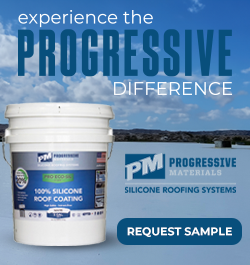materials hated to use over years
« Back To Roofers TalkMaterials change a lot over the years from fastening insulation using Lexsuco clips that would slice your hands up. Or how about Koppers KMM where the fumes took the oxygen out of your lungs.
Iron sheets are difficult to work on.
Yes Vaa, I still have all of my eyes.
My two green ones and my brown one. Thanks for asking. :laugh:
How about Fescue insulation. I remember getting little pieces in the eyes when cutting it.
Also, lexsuco nails, I don't remember then slicing up the hands, but I do remember the heads shooting off when banging them into the roof. Sometimes landing in the eyes.
Talking about eyes, I cant forget coal tar pitch in the eyes, the absolute worse!
Back in the day we used to use gasoline to clean up. One day one of the guys ended up sliding down a barrel roof wearing shorts.
We had just given the barrel roof a fresh coating of roofing cement. The tar ended up all in his junk and arse.
After cleaning up with the gasoline, it was quite the site to see.... him driving home in a convertible, with one foot up on the dashboard to cool off down there!
:S :S :woohoo: :woohoo:
As far as synthetics go, I found a hook blade useless unless new. Used a straight blade and now switched to scissors which work great. I see the roofing supply now sells them. Hated any type of vented ridge as it always leaked in this wet rainy area. Duraridge. Northern Globe shingle failures. Left me with a lot of angry customers. Certainteed starter strips. Over saturated organic felt. Torch membrane that looked like a banana when you rolled it out. Black glass granules that had slivers like fish hooks.
I've found the top-down layouts to be very useful in many cases, especially if the underlayment itself is slick and the pitch is over six or seven in twelve or when you're laying up a large piece between valleys that has almost no bottom eave width. Chalk lines and tape measures are a must, but underlayment can be used as a rough chalkline in advance of precision measuring. I have to laugh, because I've torn off jobs and discovered that the installers were too lazy to flip the laps, apparently in a rush to get it blacked in but having little or no respect for underlayment as leak protection.
There was a guy who posted on here a long time ago with the moniker of daddybob who pegged the salient problem with synthetic underlayments perfectly when he called them "squirmy." It's a serious problem, especially when using those extra wide rolls because if you're tired or careless and you get out on the sheet while you're fastening it down it your body weight stresses the underlayment at all the points of attachment.
The Titanium I used provided very poor traction. Clingy in the roll, it could barely be backrolled at all, and if you made your cut against the deck the blade tip dulled just enough to cause it to hang up on all the internal mesh after only a couple of cuts. Changing blades in midstream while holding a tall slidey roll with your feet is not my idea of working comfort.
It's neither here nor there, but I also found myself very annoyed by the graphics as it unrolled. I prefer Deck Armor, because it breathes, but it's frightfuly expensive and it will leak if you aren't extremely careful with the fasteners. As much as I dislike GAF, my utility grade synthetic of choice would have to be Tiger Paw now. JM made a hybrid called Durabase which was great in my opinion, but it didn't sell well enough for them to continue making it. There's another hybrid out there now called Safeguard 30 that is fantastic, but it's also frightfully expensive.
I have purchased every cap nailer I can find. The Buttoncap cumbersome green machine (essential if you want to install round metal caps on anything) the Crossfire, the Stingers, the one that uses those cylinders of blue plastic caps and fires a nail through them. It's all good, but no matter what you're going to get misfires and synthetic has no self-healing capability whatsoever. 30# has its downside issues, some serious ones at that, but a staple leg won't cause it to leak during a prolonged rain. As "they" like to say nowadays, at the end of the day (actually have come to hate this expression) each job and time period has to be weighed carefully. Makes it kind of hard when you're stuck with specifications called out in advance.
Ro tile, Capri ridge, 3-tab shingles with the big rock, Nicolet asbestos felt, cedar shakes with bad grain, cedar shingles with no wide material in the bundles or bad grain, cheap Korean hand nails, zinc chromate coil nails, square tin caps, quicknails, hot-dipped hand nails that are all clumped together, cheap Chinese slate, just about any facsimile shakes or slate, especially Mira Vista, Calshake, FireFree, and Lamarite, cheap asphalt with too much sulphur, wet patch, coal tar mastic, mastic that's too stiff, silicone roof coating, boardy glass ply, glass base that tears easily, flax, organic felt that's too oily, organic felt that's too brittle, any rolled goods that stick in the roll, Titanium underlayment, SBS underlayment, sheet metal that doesn't bend or work properly, sheet metal parts that are no stronger than aluminum pie pans, all-neoprene roof flashings, Oatey roof flashings, any lightweight laminate with aggressive sealant. Presidentials...I like the shingle but hate the setback. Bubble dome skylights, "self-flashing" skylights. Flimsy battens, smart vent, roll vent, stealth vents, Duraridge. Just getting rolling, but I've actually had enough for one night. Fortunately there are a lot of great materials out there that we can insist on using. John, they used to make a stainless steel foil coated in plastic that would cut you the same way. That one was to beef up a fire rating. It felt completely harmless but could cut you to pieces in a millisecond.









-2.png)











